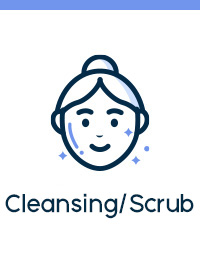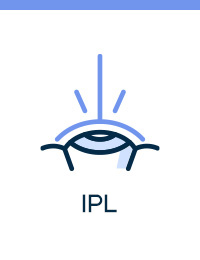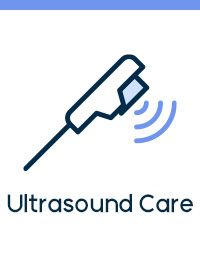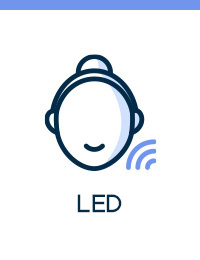Dry Eye Syndrome
-
Eye Disease Clinic
-
Dry Eye Syndrome
What is dry eye
syndrome?
A decrease or fluctuation in the quantity and
quality of the tear layer, which moisturizes the eye
and keeps it soft and comfortable,
that should be treated by looking at both
the water and sewer systems of the tear pathway.

Causes of Dry Eye Syndrome
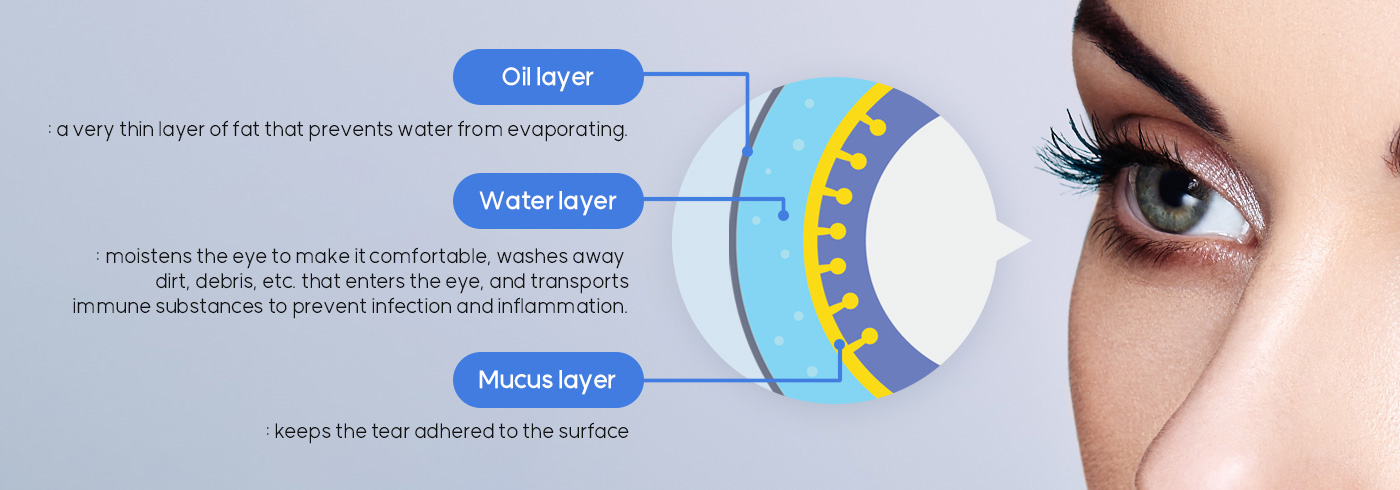
Tears are made up of three layers: an oil layer, a water layer, and a mucus layer.
The oil layer prevents tears from evaporating, the water layer moisturizes the eye, and the mucus layer helps
tears stick to the surface of the eye.
15% of dry eye syndromes are tear aqueous deficiency and 85% are tear evaporation excess.
This means that dry eye syndrome is caused by abnormalities in the water and oil layers of the tear film.
What causes
abnormalities in the water and oil layers?
Environmental
factors such as
dryness and dust
irritation
Diseases such as
eyelid curling
and blepharitis
Aging
Medication
Chronic fatigue
There are many factors, but the main one is ‘aging’.
As we age, our glands naturally decline in function, just as all bodily functions decline.
As the glands that secrete the tear and oil layers decrease in function, the eyes are not well protected by tears,
causing irritation and various symptoms of dry eye syndrome.
Dry Eye Syndrome Treatment
at First Samsung Eye Clinic
IPL Laser
A new treatment equipment that can provide relief
from dry eye syndrome.
This equipment has been approved for safety by the US FDA
and uses an IPL laser to stop the aging of the oil glands,
enabling faster and more effective treatment and
prevention of dry eye syndrome.
Opens up blocked oil gland channels.
Helps treat eyelid inflammation.
Stimulates the tear glands to increase tear production.
Reduces inflammation by constricting blood
vessels around the eye.
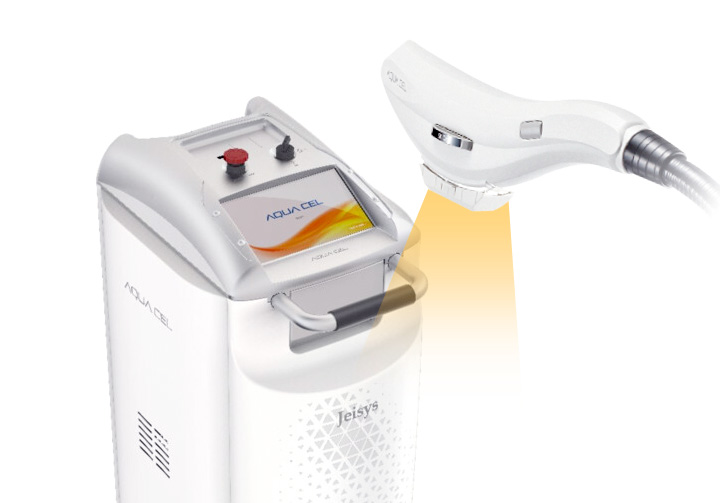
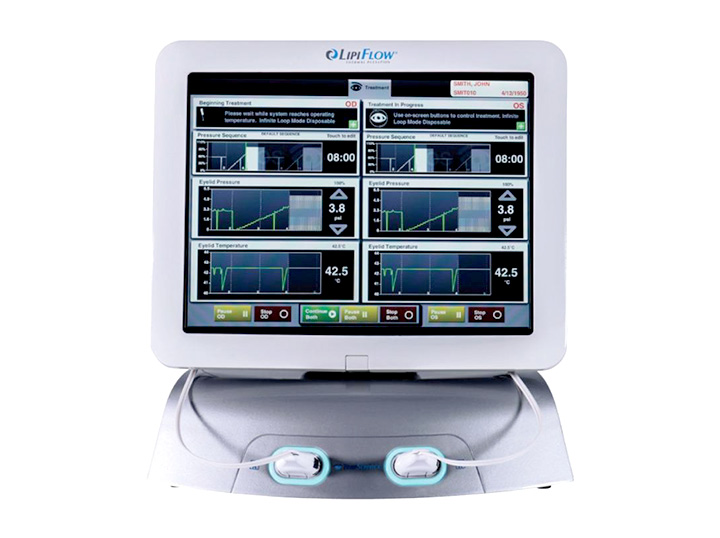
Lipiflow
A medical equipment for the relief and treatment of
dry eye syndrome caused by underactive meibomian glands,
treating blocked oil glands to relieve and
prevent dry eye syndrome.
Reduces meibomian gland inflammation
to help release healthy oils
Relieves dryness before and after visual correction
or cataract surgery
Simultaneous treatment of meibomian glands
in the upper and lower eyelids
Short treatment time of approximately 12 minutes
Safe treatment with inbuilt corneal protection
Dry eye syndrome treatment cases
at First Samsung Eye Clinic
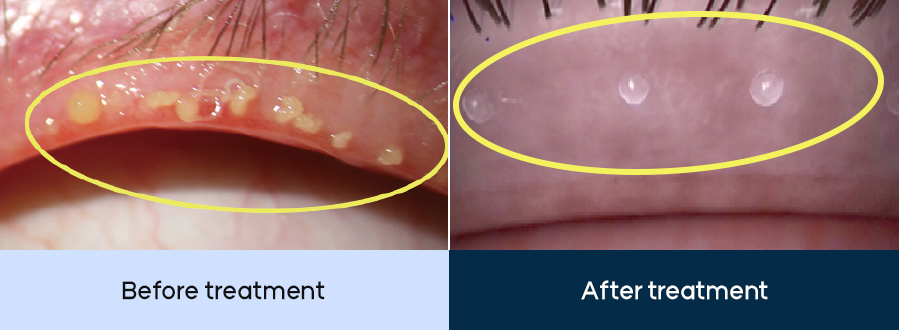
What is punctal
occlusion treatment?
Punctal occlusion is the hole through which tears exit the eye,
and to relieve dry eye, a punctal plug (silicone or polydioxanone)
is placed in the tear duct to keep the tears moist.
It is a method of preserving one's own tears to treat dry eyes,
and unlike conventional artificial tears, it does not require
exposure to the bladder and increases the amount of
natural tears on a more consistent basis.
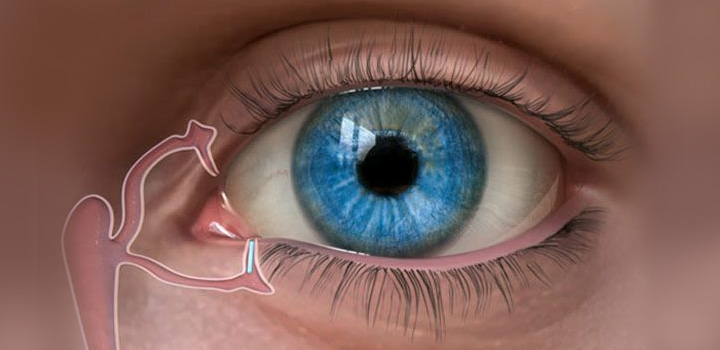
How Punctal Occlusion Works
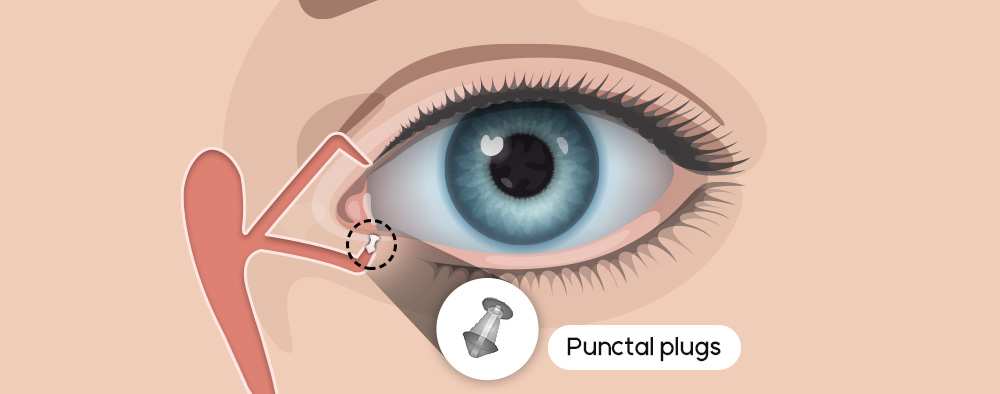
A tear plug is inserted Punctal plug, where tears drain from the conjunctival sac, to block the outflow path.
The punctal occlusion duration can vary from 2 months to permanent closure, depending on the material used,
and is adjusted to the patient's eye condition.
What is
conjunctivochalasis?
When the white covering surrounding the eye (the conjunctiva)
stretches and wrinkles, or puffs out between the eyeball
and the lower eyelid, covering the lower eyelid,
it's called conjunctivochalasis.
As time goes on, wrinkles in the conjunctiva of the eye
are a natural part of aging, just as wrinkles
in the skin develop as we age.
However, if you notice similar symptoms, it's time to visit
your Eye clinic to avoid overlooking them by thinking
they're part of the natural process.
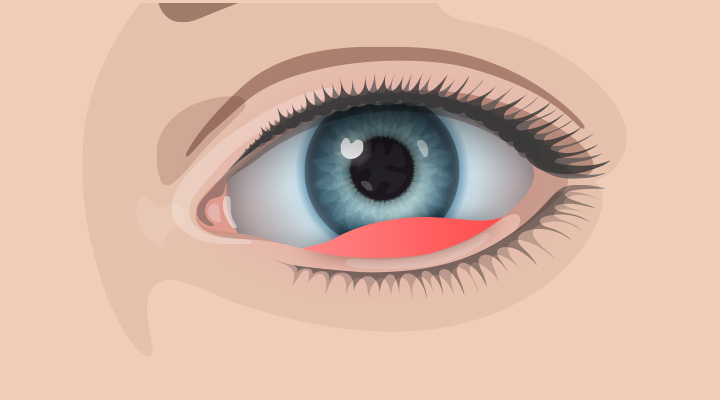
Conjunctivochlasis symptoms
When conjunctivochalasis causes the conjunctiva to swell, it makes it difficult to blink,
and the conjunctiva covers the lacrimal glands, blocking the tear drainage holes, causing tears to drain poorly.
Dry Eye
Syndrome
Epiphora
Eye irritation
Foreign body
sensation
Redness
Treatment of conjunctival anhidrosis
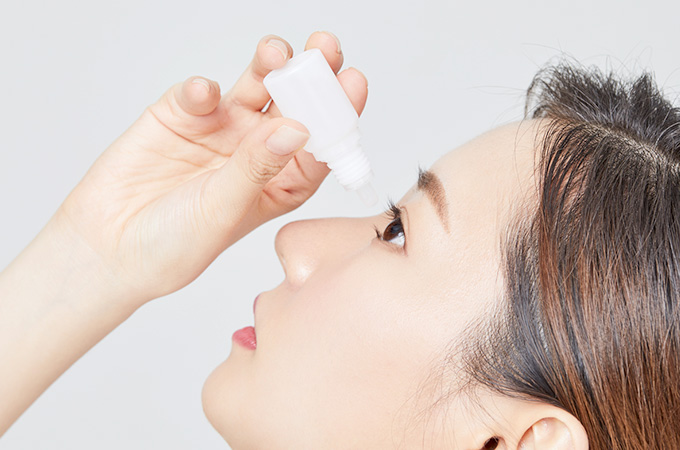
Treatment with medication
Artificial tears, antihistamines, steroid eye drops
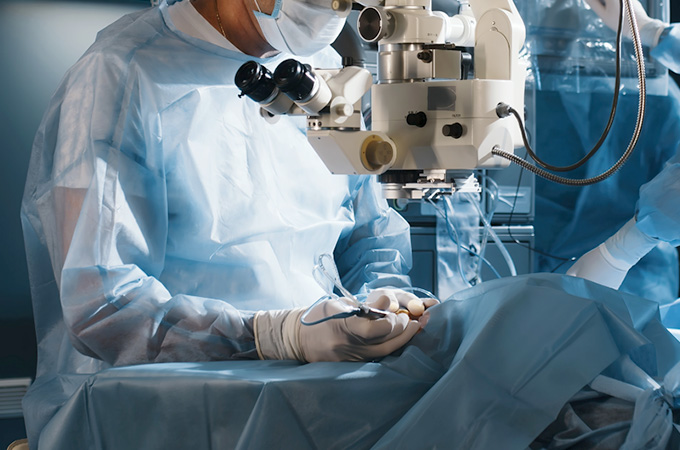
Surgical treatment
Conjunctivectomy, Amniotic Membrane Transplantation,
Megasonic Electrocautery
Conjunctivitis Treatment Cases
from First Samsung Eye Clinic
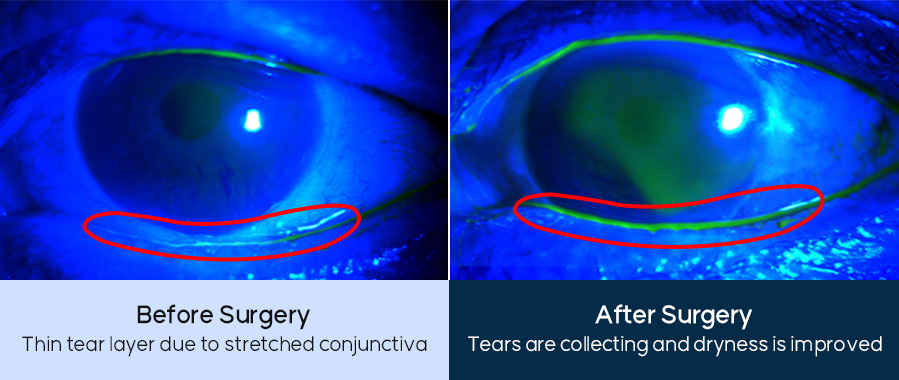
First Samsung Eye Clinic YOUTUBE



